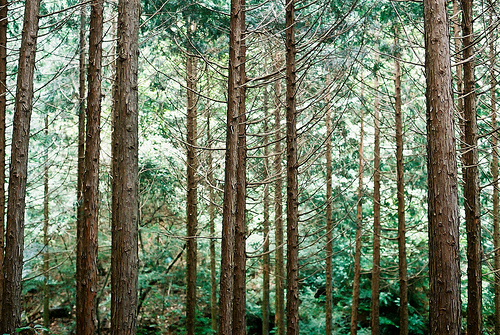Editor’s Note: TechCrunch contributor Semil Shah currently works at Votizen and lives in Palo Alto; you can follow him on twitter @semil
They say hindsight is 20/20.
By now, everyone knows about the fastest-growing site on the web. Yet, for a period of time in 2011, despite all the signals pointing toward the phenomena, most in Silicon Valley weren’t able to sniff out the trend even though, looking back, the clues were right under our noses. I wanted to write this post to offer a theory as to why the Valley, at large, missed this trend. Additionally, I want to underscore that this post is less about Pinterest, and more about how even the most focused, attentive audiences can miss the forest for the trees.
The basic premise is as follows: For the past 24 months, the tech startup community has been identifying and analyzing big trends, almost to the point of over-analysis–myself included. Each one of those trends, in and of itself, represented disruptive opportunities, generating enough excitement to ignite hundreds of new applications in each category. However, by examining each one in a silo, the resulting focus of tunnel-vision reduced the peripheral vision, making it increasingly difficult how each trend, if threaded together, could form a larger force.
Let’s revisit each trend briefly.
First, we have pictures. The excitement around the mobile camera ignited an overwhelming flurry of new photosharing applications. Indeed, photographs are the thin edge of the wedge to building new social products. That’s why applications like Path and Instagram continue to grow in popularity. With Pinterest, however, the main interaction around pictures is slightly different — users aren’t uploading as many original pictures as they are capturing and repinning pictures that already exist, or as social product guru Josh Elman says, “where people are primarily interacting with content that they didn’t create.” Whether it’s original pictures or activity around existing ones, the community’s focus on pictures was the exact right instinct have.
Second is “founder pedigree.” For the past few years, many have been captivated by the prevailing wisdom that, when searching for the next big thing in the early stages, and in the absence of traction or product-market fit, a founder’s background becomes one of the — if not the most — important data points. The stereotypes are played out: Kids who drop out of school, or alumni of the cutting edge social companies, or wizards graduating from the most elite technical programs. This cuts both ways. Sometimes, spending time at certain companies can cast a founder in a negative light. In the case of Pinterest (as well as Instagram), the Founder/CEOs aren’t as “technical” as one would expect.
Third is location. Over the past few years, we’ve all pontificated about just “where” the next big thing would emerge from. Will it be from Silicon Valley, New York City, somewhere in the middle of the country, or maybe in Asia or South America? The uncertainty around just where this would originate from caused a frenzy among investors and bloggers to scour the earth, turning over rocks. It’s been an attractively contrarian view to assert that the next thing won’t be made near the other big players in California, but at least for this round, it appears the next big thing not only happened close to Silicon Valley, but in a town where other big things have started.
The fourth and final “tree” is perhaps the strongest force behind the disruption: women. Turns out, women do indeed “rule the Internet.” In my opinion, the single best guest post to TechCrunch in 2011 was authored by Aileen Lee, a partner with Kleiner Perkins. If you haven’t read it, you must: “Why Women Rule the Internet.” Last March, Lee described why the female demographic is not only valuable in numbers, but also in terms of the influence it will exert online in ways we haven’t seen yet. On Pinterest, of course, we see a stunning example of just how strong this influence can be. It’s anecdotal, but I’ve heard many women say that spending a few minutes on Pinterest is more “soothing” experience than interacting on Facebook or Twitter.
Looking back now, as the network effects have taken root and the branches of growth are increasing in strength, it all seems painstakingly obvious. Until it became obvious, however, for that small period of time when people weren’t sure. It’s a classic “missing the forest for the trees.” We all correctly identified the right trees to examine and climb, but in that exploration, the majority of us weren’t able to see those trees together as part of a larger forest until it was too late. Perhaps this is just a brutal fact of nature and a gentle reminder that, despite out collective intelligence and endless search, the next big thing is likely already in front of us — we just have to step away from the trees once in a while in order to see it.
Photo Credit: Creative Commons Flickr / jeehon
